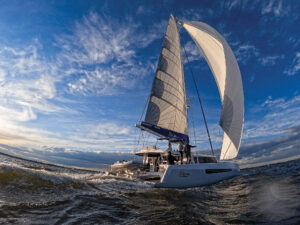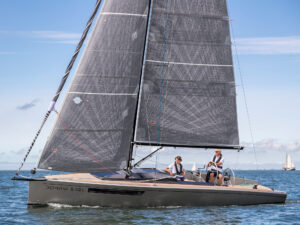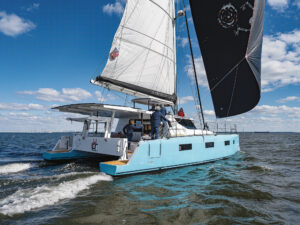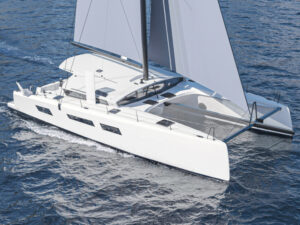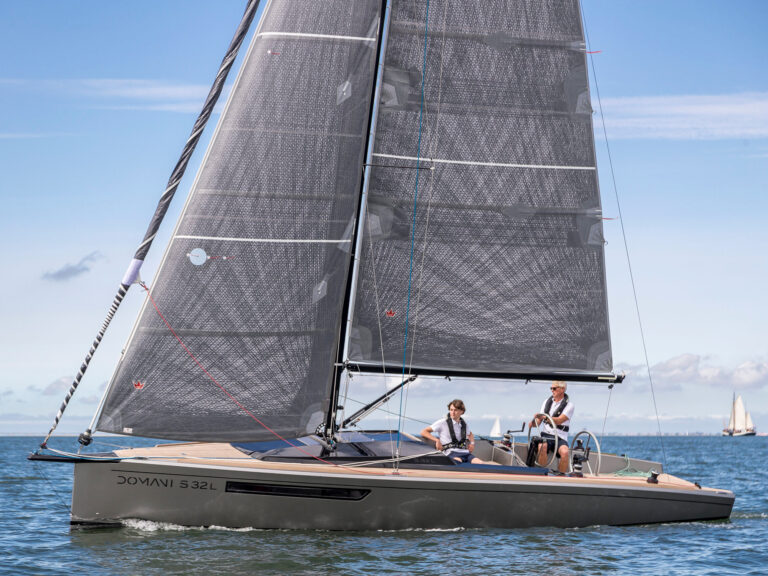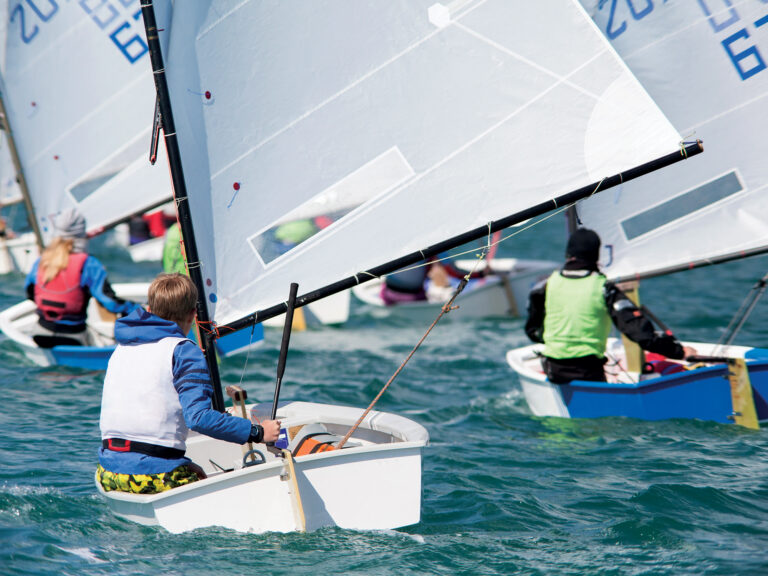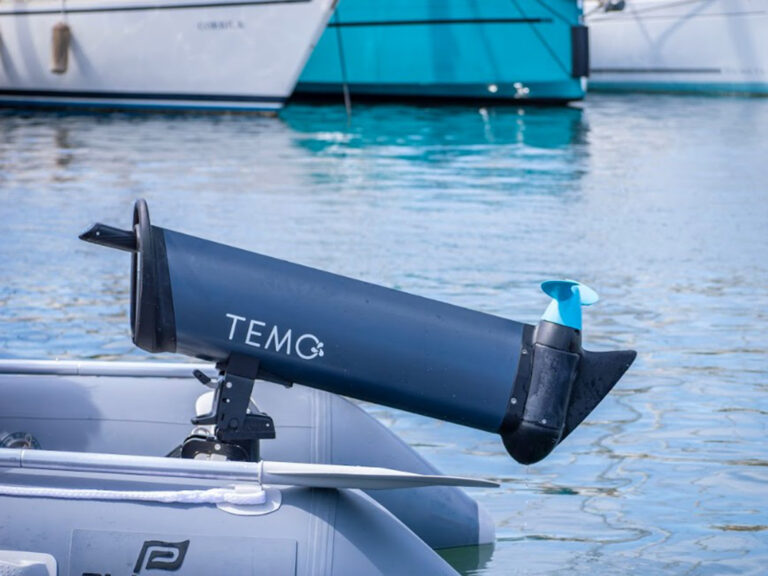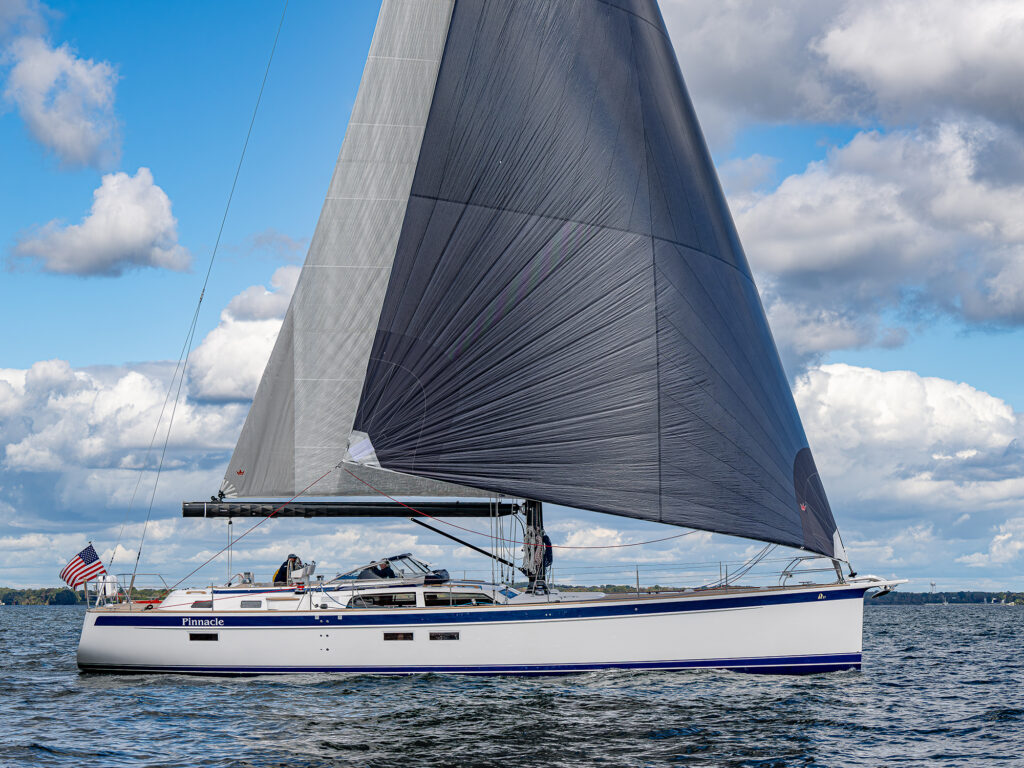
Packed with redundant systems, an enormous 24-volt lithium battery bank and generator to feed it, a high-output watermaker, practical and elegant accommodations below for owner and crew, and tankage enough for more than a 1,000-mile cruising range, the Hallberg-Rassy 57 was by far the most striking long-range voyager to be found among 2024’s Boat of the Year entries.
It’s a beauty of a sailboat. Designed by longtime Hallberg-Rassy collaborator Germán Frers, it’s the second largest in the builder’s seven-model range that spans 34 to 69 feet. Like Frers’ other recent Hallberg-Rassy designs, the 57 features a plumb bow, twin rudders, a modern sail rig and beam carried aft to allow for more living space below.
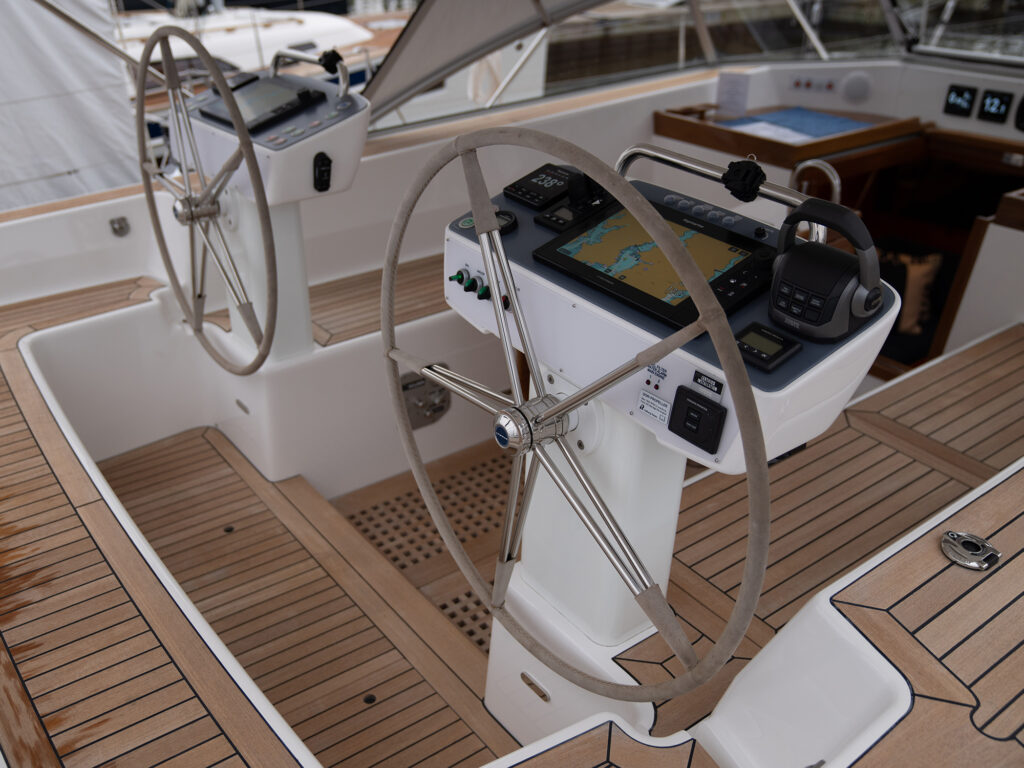
With a decked-out price tag approaching $2.8 million ($2.2 million for the base boat), the 57 will not be an option for every cruising couple or family, but for those who can afford such luxury, this boat should definitely be on the must-see list because construction, gear and systems are all top notch. And, boy, the boat can sail.
Topsides, the 57 features a large and deep center cockpit, with twin wheels and a drop-leaf fixed mount table between teak-covered seats to either side. One small but nice touch: Beneath the table is a stainless-steel rail that can be extended and used as a brace when the boat’s heeled. The forward end of the cockpit sports a signature Hallberg-Rassy windshield; either a canvas or hard dodger are options.
At either helm station, electric Lewmar winches are close at hand for trimming sails, and both the hydraulic in-mast furling main and slightly overlapping genoa can be rolled in and out with the push of a button. Halyard tension for both sails, the main’s outhaul and the backstay can be adjusted using hydraulics, as well. The optional Seldén carbon-fiber mast and boom reduce weight aloft by 30 percent, compared with the standard aluminum rig.
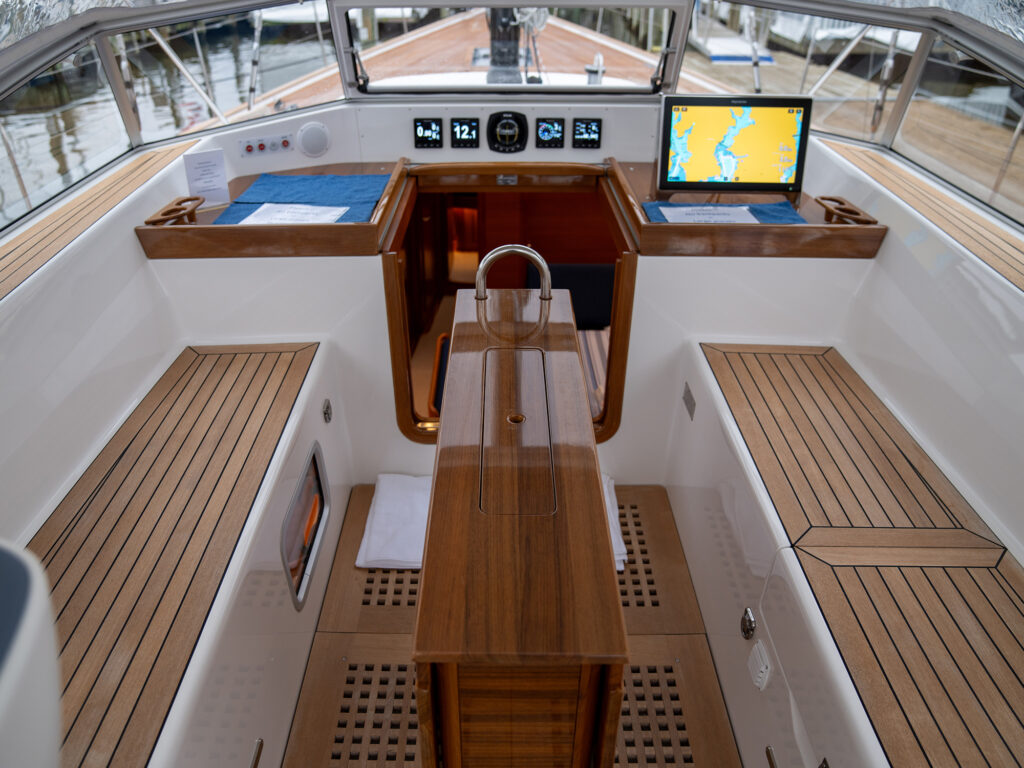
On deck, a low-profile cabin top ensures excellent visibility of both sails and surroundings. Forward of the mast, the flush teak deck is wide and open, as is the area behind the aft cabin. Aft there is ample locker space for gear; forward, there’s another large locker between the anchor well and forward cabin for sails, fenders and more gear. Bring on the boat toys, in other words, there’s room for lots of ’em!
Down below, the best word to describe the interior is “stunning.”
The boat we saw in Annapolis was filled with rich mahogany woodwork (light European oak is also an option), dark blue cushions and white overhead and side panels. Cabin top and side ports, plus ports in the hull let in lots of light and afford a good view of the outdoor surroundings.
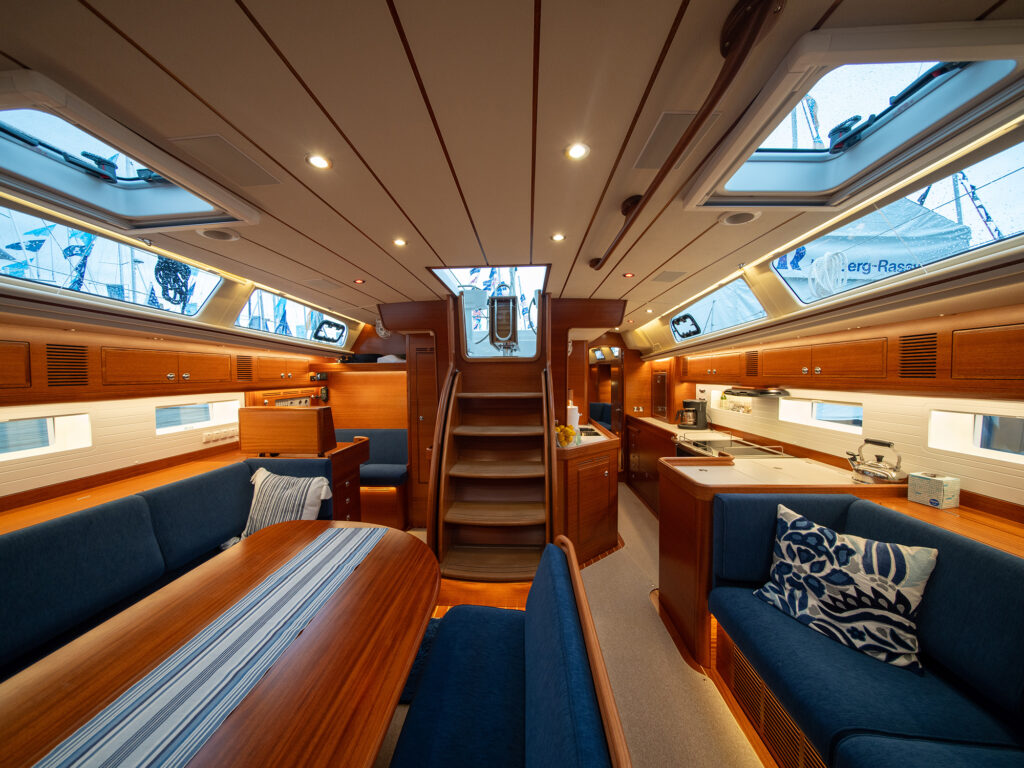
At the foot of the companionway, a full-size forward facing nav station/work desk is to starboard, next to a hanging locker for wet gear. To port is the galley area and walk-through to the owner’s sizeable aft cabin. The boat we visited had a king-size centerline berth, with a seat to starboard and couch to port (twin berths are an option). Either layout includes an en suite head and shower.
The aforementioned galley was well equipped, with ample-sized and fiddled Corian counterspace for the cook, two fridges, a freezer, day fridge and an electric induction range and oven. (A washer and dryer are on the extensive equipment list as well.)
The dining table is to starboard in the saloon, with an L-shaped couch outboard and centerline seating for two. A long settee sits to port, but can be replaced with an optional pair of captain’s chairs and a table, if desired.
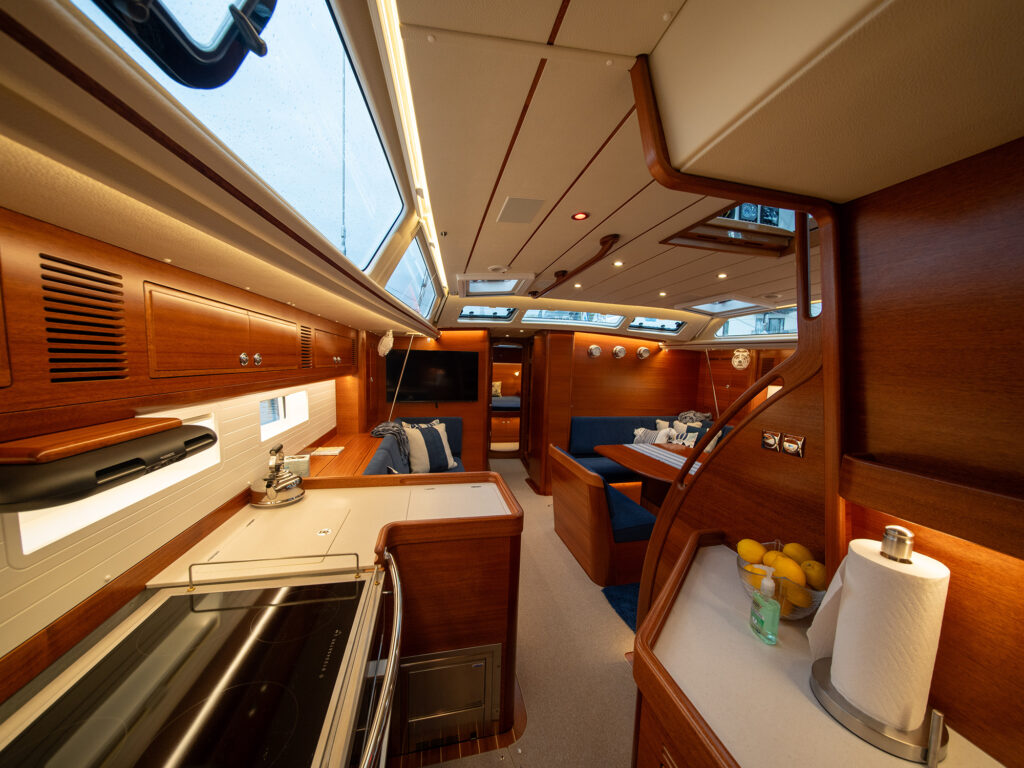
Forward of the saloon, a buyer has a couple of choices for cabin layouts. The boat we visited had a head and shower to port and a guest cabin with a berth and bunk over to starboard. Forward of that was a third stateroom with an island queen bed and a pair of hanging lockers. There’s also an option for a Pullman-style berth opposite the head, and bunks in the far forward cabin.
The 57’s hull and deck are hand-laid, with Divinycell foam coring for sound and heat insulation and solid glass where hardware is mounted. The standard 8-foot keel is cast lead; the boat we sailed had the optional 7-foot-1-inch shoal foil. A 24-volt electrical system powers most of the boat’s systems. A walk-in engine room provides excellent access to the 175-hp Volvo diesel, generator and related gear.
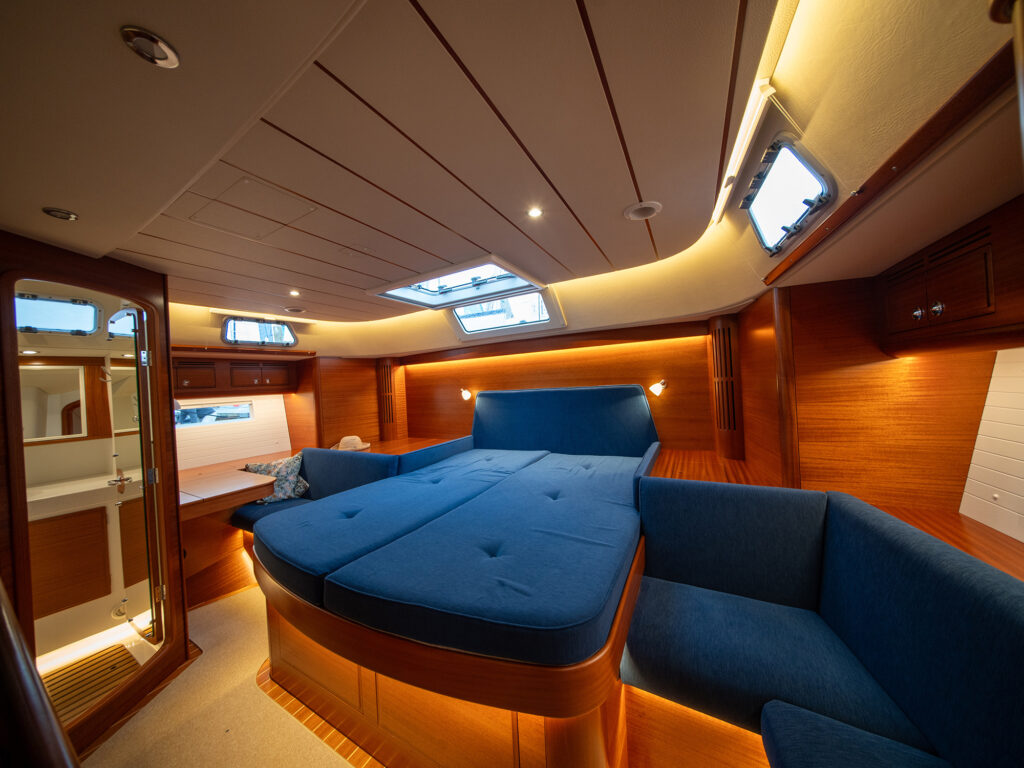
As elegant as the 57 was to look at, the best part of our tour came once the sails were set, first rolling out the big powerful code zero mounted on a flexible furler, and later tacking upwind with the genoa set. We didn’t have a lot of wind to work with, only about 8 knots true. But still we managed to see fairly steady 6-knot readings on the GPS. The designer’s polars indicate the 57 can hit the high 8s in as little as 10 knots of breeze.
After our Boat of the Year sea trial of the 57, I was reminded of the old saw that holds a fine-looking boat is often a fine sailing boat. To my mind, the new Hallberg-Rassy is a head-turner on both accounts.
Mark Pillsbury is a CW editor at large and was a 2024 Boat of the Year judge.
Hallberg-Rassy 57 Specifications
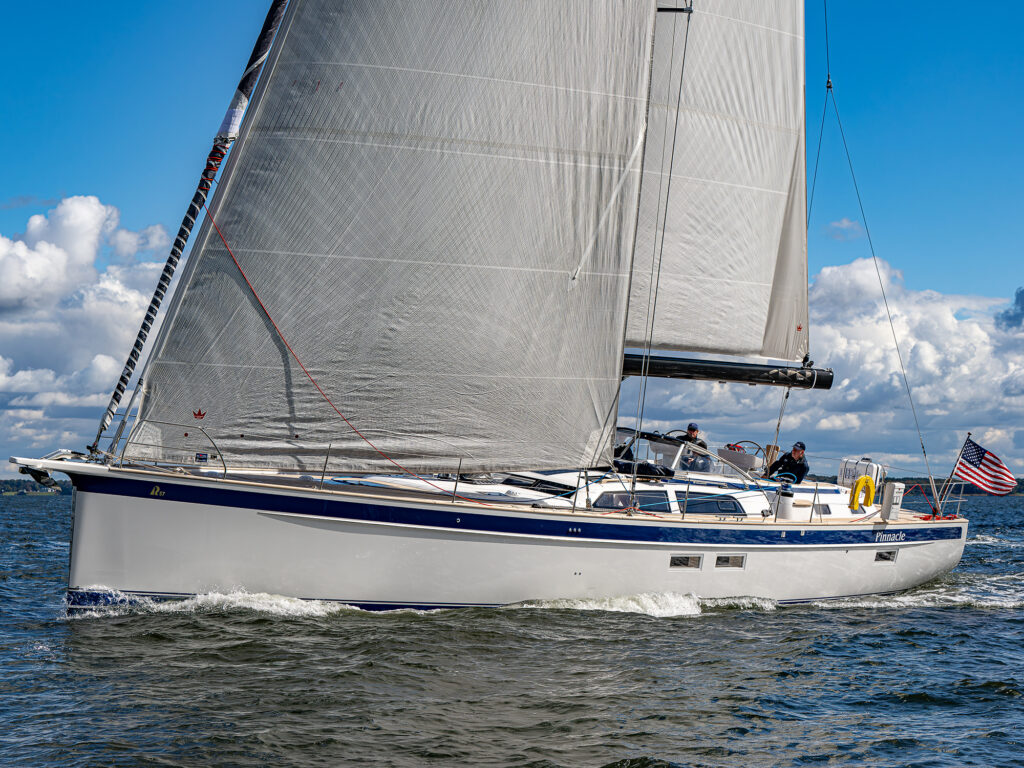
| LOA: | 57’ 4” |
| BEAM: | 16’ 9” |
| DRAFT: | 6’ 6” (shoal); 8’ (deep) |
| SAIL AREA: | 1,701 sq. ft. |
| DISPLACEMENT: | 61,730 lb. |
| D/L: | 166 |
| SA/D: | 17.4 |
| WATER: | 271 gal. |
| FUEL: | 277 gal. |
| ENGINE: | Volvo 175 hp |
| DESIGN: | Germán Frers |
TAKE THE NEXT STEP
PRICE: approx. $2.8 million (as tested)
CONTACT: hallberg-rassy.com

